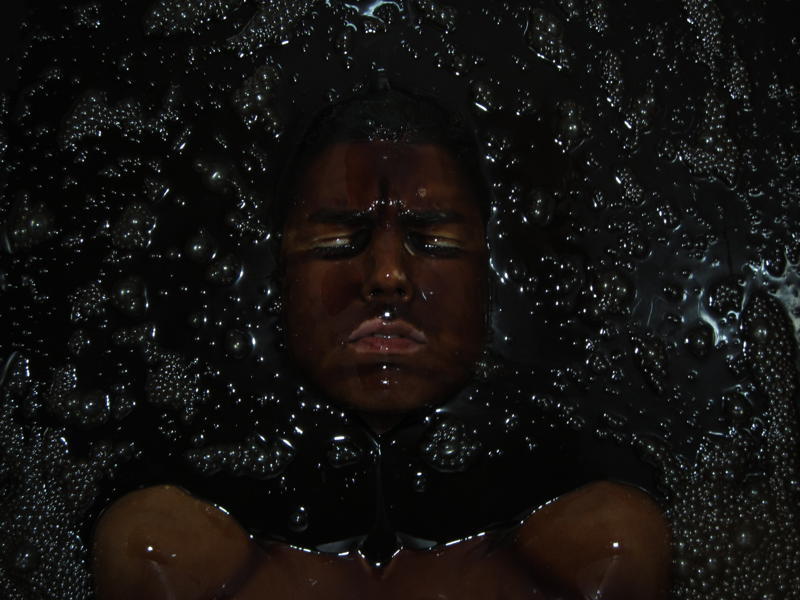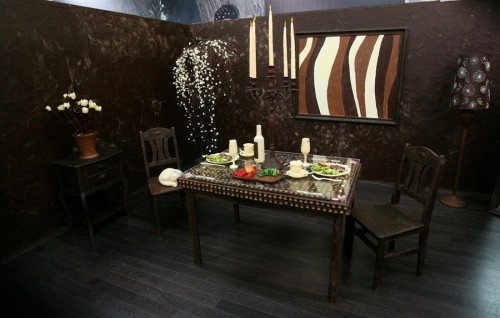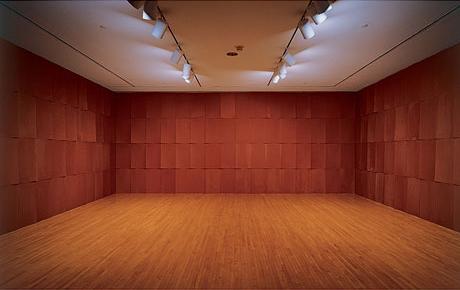Wacky World of Choc Wednesdays: Chocolate Stop Motion Videos
This week’s focus is on chocolate, artistry, and technology once again, this time in the form of videos that apply stop motion animation techniques to chocolate. Chocolate lends itself well to stop motion and recent use of the technique ranges from slick pro jobs with fancy props, lighting, and the use of sophisticated software to DIY digital camera+candy+home computer work done on the cheap.
A friend of a friend passed on this whimsical video for Jesse & Joy’s “Chocolate,” directed by Carlos Lopez Estrada:
The stop motion video uses dozens of different foods, chocolate and cookies principal among them, and was put together by an incredibly artistic (and organized!) crew. It’s result is a gorgeous mix of organic materials and technological possibility. I especially love the elephant drummer and the cheery singing dairy cows. Watch the behind the scenes video for a look at how they used a torch to melt chocolate through a metal table. Don’t try this at home, kids.
The chorus of the song, first in the original Spanish, then roughly translated into English:
Nuestro amor sabe a chocolate
Un corazón de bombón que late
Nuestro amor sabe a chocolate
Oh oh oh oh ohOur love knows chocolate
A chocolate heart that beats
Our love knows chocolate
Oh oh oh oh oh
Cadbury Creme Egg launched an ad campaign in 2008 with the absurd slogan “Release the Goo.” The campaign has a website linking to games, apps, and consumer generated content, all centered around dares. It also includes a number of short stop motion videos ending with dramatic explosions of Cadbury Creme Egg gooeyness. A particularly heartwrenching example, Mousetrap:
A YouTube search reveals a host of DIY stop motion videos that involve chocolate. While these videos are not as elaborate as those of Jesse & Joy or Cadbury Creme Eggs, they are nevertheless entertaining examples of chocolate stop motion fun.
For example, there is the touching Milk Chocolate: A Love Story starring interracial chocolate bunnies:
And the riveting Chocolate Tetris played with Ritter Sport squares:
Finally, the team behind the new Sagres Preta Chocolate Beer from Portugal adapted the stop motion technique to create “the world’s first website entirely made of chocolate”, an interactive site that’s worth a look to admire its artistry. The launch of the beer in conjunction with the site has generated viral publicity on the web; blogs and feeds have discussed the site extensively over the past two months (e.g. posts from Foodista, Oddity Central, and so good magazine. Here’s a behind the scenes look at the making of the site:
So cool.
Wacky World of Choc Wednesdays: Chocolate LPs
Over the past few years, a relatively quiet (ha!) trend has developed in the chocolate world, mostly as a collaboration between chocolatiers and indie electronica/industrial rock/experimental pop musicians: chocolate LPs.
These are vinyl records, minus the vinyl, made out of chocolate. They’d be sorta neat on their own (there’s something so irreverent about biting into a fragile object in which much great art has been encoded), but what makes these chocolate records really special is that they actually play music. As in, you can place them on a record player, drop the needle, and then hear sound. Now that is awesome!
Here’s one example, from a charming maker in Berlin, Germany:
And here’s another, where a Fife, Scotland-based chocolatier, Ben Milne, prepared a chocolate LP single for his friends in the band FOUND. The single is “Anti Climb Paint,” and the chocolatey end result plays the song recognizably:
A gem of a quote from Ben: “I heard that vinyl is on the increase and that CDs are on their way out, so chocolate records could be part of a resurgence and people getting their record players out of their attics.” From his lips to God’s ears! (Or Brooklyn!) Also, don’t miss the dreamy video for the song, performed in the Fisher & Donaldson Bakery where Ben works, and depicting a stylized (fictional) making of the chocolate single.
Finally, a team of skeptics from Kerrang! Podcasts went from naysayers to yaysayers when American band Innerpartysystem sent them a chocolate single to try out. Turns out, these records do best when fresh from the refrigerator.
Personally, I’d love a chocolate single of “In a Gadda da Vida,” from Iron Butterfly. My dad, who has the baddest music taste of anyone I know, taught me how to rock out with this song blasting on his record player, way back before the days of cassette tapes, CDs, mp3s, and YouTube. The original version of the song is a little over 17 minutes long, by which point we would most definitely need a snack. Yes, please.
Wacky (Weird Wild Wonderful Whaaaat?!) World of Choc Wednesdays
I’ve got several posts in the works right now. They will be published here over the next few weeks. Truth be told, I spend most days typing away at my dissertation (on a totally different topic, though with eerily similar theoretical underpinnings…), and after filling up those pages I’m plum outta words. Combine that with the excitement of spring and summer in New England, and there are never ending excuses for putting off blogging!
Delays, shmelays. Here’s something fun:
Each Wednesday, I plan to post something neat from our beloved wacky world of choc, something that makes me go “Whoa!” This week, I was struck by a post in Juxtapoz Magazine (also covered by HuffPost), featuring a video art piece by artist Martynka Wawrzyniak. In the video, Wawrzyniak lies face up on a white background, visible only from her shoulders to the top of her head. Over the course of a crawling, intense nine minutes and twenty two seconds, a stream of liquid chocolate pours down over her until she is submerged.
The video:
Chocolate, 2010 from MARTYNKA WAWRZYNIAK on Vimeo.
The end result:
I wish that there was a video feed to show visceral audience reactions.
HuffPost asked some great questions about the piece: “Is it gross? Is it suggestive? Is it political? Is it poignant?”
I am wondering, of course, is it about chocolate? What if, instead of chocolate it were water, or milk, or glue, or motor oil? [shudder] What do you think?
Chocolate Rooms: “Eatable” Art
One of the most widely reported stories in chocolate news last week had to do with a room made entirely from chocolate, now on exhibit in a supermarket in Vilnius, the capital city of Lithuania. Modeled to look like a typical Lithuanian sitting room, the exhibit is 17 square meters in size (approximately 183 square feet), and features walls, furniture, flowers, candles, dishes, and even food, all made out of chocolate. Artist Mindaugas Tendziagolskis, working with a team of chocolate crafters, used approximately 300 kilograms (approximately 661 pounds) of chocolate in the construction of the room. This was all done just in time for Valentine’s Day.
Several more photos of the room are available, as well as a video with brief artist and audience interviews.
The room will remain on display in Vilnius until March 8, 2011, when it will be disassembled… and CONSUMED!
Reading about this room got me thinking about the importance of understanding chocolate as art. This type of chocolate architecture, or large scale chocolate sculpture, is increasingly common. Chocolate rooms, in particular, have been imagined for at least several decades and often symbolize lavish extravagance or ridiculous whimsy. On a smaller scale, one can often find chocolate sculptures in shops or restaurants or observe nerve-wracking chocolate sculpting competitions on the Food Network. Chocolate is a fascinating, formidable medium for artistic creation, and one that affects multiple senses of its audience – sight, smell, touch, and taste. (Well, maybe hearing, too, if the pieces come crashing and crumbling down… oh, the heartbreak!)
Charlie and the Chocolate Factory: The Chocolate Room
Charlie and the Chocolate Factory, the classic children’s book by Roald Dahl (1964), features “The Chocolate Room,” the very first room that a group of lucky golden ticket winners and their parents tour along with Willy Wonka, the eccentric proprietor of the Wonka Chocolate Factory. Opening the door to the room reveals a veritable wonderland – a valley with green meadows, lush trees, bushes, and flowers, and a great river flowing with melted chocolate.
Mr. Wonka then explains the room’s purpose:
“There!” cried Mr. Wonka, dancing up and down and pointing his gold-topped cane at the great brown river. “It’s all chocolate! Every drop of that river is hot melted chocolate of the finest quality. The very finest quality. There’s enough chocolate in there to fill every bathtub in the entire country! And all the swimming pools as well! Isn’t it terrific? And just look at my pipes! They suck up the chocolate and carry it away to all the other rooms in the factory where it is needed! Thousands of gallons an hour, my dear children! Thousands and thousands of gallons!”
The children and their parents were too flabbergasted to speak. They were staggered. They were dumbfounded. They were bewildered and dazzled. They were completely bowled over by the hugeness of the whole thing. They simply stood and stared.
“The waterfall is most important!” Mr. Wonka went on. “It mixes the chocolate! It churns it up! It pounds it and beats it! It makes it light and frothy! No other factory in the world mixes its chocolate by waterfall! But it’s the only way to do it properly! The only way! And do you like my trees?” he cried, pointing with his stick. “And my lovely bushes? Don’t you think they look pretty? I told you I hated ugliness! And of course they are all eatable! All made of something different and delicious! And do you like my meadows? Do you like my grass and my buttercups? The grass you are standing on, my dear little ones, is made of a new kind of soft, minty sugar that I’ve just invented! I call it swudge! Try a blade! Please do! It’s delectable!”
This scene was dramatized in the classic 1971 film Willy Wonka & the Chocolate Factory, starring Gene Wilder as Wonka, and includes the famous song “Pure Imagination,” which is equal parts eerie and dreamy:
Tim Burton’s take on Charlie & the Chocolate Factory (2005) features Johnny Depp as Wonka, and brings the description of the room’s charming “eatable-ness” into the realm of the rather bizarre.
In the book, Augustus Gloop, of the “enormous stomach,” sneakily samples chocolate from the river and falls in, only to be sucked into a pipe, clogging it up. Willy Wonka sends Augustus’ parents off to retrieve him in another room of the factory with the aid of an Oompa-Loompa, while the rest of the Ooompa-Loompas sing a very unflattering song about Augustus’ size and appetite to the rest of the tour group. (The troubling issue of the cacao bean-obsessed Oompa-Loompa tribe will most certainly be taken up in a subsequent post.)
Edward Ruscha: Chocolate Room
A more abstract approach to using chocolate in the construction of a room comes in the form of Edward Ruscha’s installation Chocolate Room, which debuted in 1970 and was again exhibited at The Los Angeles Museum of Contemporary Art in 2004.
This description, taken from the MOCA website, gives more information:
For its debut at the 35th Venice Biennale in Italy, Chocolate Room originally consisted of 360 shingle-like sheets of paper silk-screened with chocolate and applied to the interior walls of the gallery space. Edward Ruscha was just starting to work with organic materials in his prints, using such unconventional substances as blood, gunpowder, or cherry juice instead of traditional inks. During the summer of 1970, curator Henry Hopkins invited Ruscha and several other artists to make a work for the American Pavilion as part of a survey of American printmaking with an on-site workshop. Many declined the invitation in protest against the Vietnam War; Ruscha intended to do the same, but eventually reconsidered. When Chocolate Room went on view in Venice, protesters etched anti-war slogans into the rich brown surfaces of Chocolate Room, leaving it to stand as a spontaneous anti-war monument, which Ruscha ultimately considered more effective than non-participation in the Biennale. In the summer heat, the heady smell of chocolate was particularly overwhelming and attracted a swarm of Venetian ants, which ate away at the work. MOCA acquired Chocolate Room in 2003 and silk-screens new chocolate panels each time it is installed.
Promotional Decadence: Godiva Suites and Sets
Various other chocolate rooms have popped up from time to time, most often for the sake of novelty and marketing, such as the “Godiva Decadence Suite” in New York’s Bryant Park Hotel in 2008 (and again in 2009). The suite included a chocolate reinterpretation of Gustav Klimt’s “The Kiss,” a Jackson Pollock-inspired piece, and chocolate “Pucci” armchairs. Godiva ran a promotional competition involving the suite, and a winner was awarded a trip to New York City for two to stay in the suite and participate in a variety of chocolate-themed activities. Godiva’s press release explains more, and the room can be seen in detail in this video.
Perhaps the most widely viewed chocolate architecture exhibit, however, was on the February 22, 2010, Oprah Winfrey Show episode “That’s Incredible!,” which reached millions of viewers. For one day, Oprah’s set was made of Godiva chocolate from top to bottom, a feat of chocolate engineering and ingenuity. The set took 800 boxes filled with 52 different kinds of chocolate and 1400 hours of labor to make.
I could describe this more, but it is really so much better to see it: The Making of Godiva’s Chocolate Set (Video)
Detailed photos are also available. I especially love the elaborate crystal chocolate chandelier that took dozens of man-hours to make. The chocolate wine glasses are also to die for – what craftsmanship!
Oprah, who appeared gleeful to be surrounded by such chocolate opulence, remarked on the fantastic smell on set (ooh la la!) and mentioned that the audience would be munching on it at the end of the taping. This, of course, brings up lots of questions about how the chocolate in these chocolate rooms was handled and for how long it was exposed to swarms of visitors. I am crinkling up my nose just thinking about the questionable sanitation. Oh, who am I kidding, I would totally eat that.
For the record, the set was designed by Larry Abel and Raymond McCallister of Larry Abel Designs. They design and plan events, often for fancy pants celebrity shindigs, and have on numerous occasions built events around elaborate chocolate sets. If that’s not inspiration to create your own job for an awesome niche market, then I don’t know what is.
DIY Chocolate Architecture: In Your Living Room
For those bravehearted readers with a hankering to get started on making their own chocolate rooms, celebrity chocolatier Jacques Torres teamed up with the Food Network to offer a “Do It Yourself Chocolate Sculpture” recipe, which takes 5 hours of prep time, has a skill level of “difficult,” and yields one large chocolate sculpture.
Alternatively, the folks at Special K Chocolatey Delight cereal seem to believe that we can just imagine ourselves a room, even a city, of chocolatey delight, as evidenced by this recent commercial:
The attention to detail and care with which chocolate rooms are put together is mind blowing. There’s something almost achingly beautiful about works of art created from fragile, perishable materials like chocolate. These works celebrate the ephemeral sensuality of chocolate, and challenge us to understand them in light of their inevitable demise. For they are, indeed, hopelessly breakable, melt-able, rot-able, and “eatable.”
There is no
Life I know
To compare with
Pure imagination
Living there
You’ll be free
If you truly
Wish to beFrom the song “Pure Imagination,” by Leslie Bricusse and Anthony Newley




